On Nov. 25, 2015, the Design Talks Institute, which works to educate the public on the value and impact of good design, dedicated one of its “d.talks” public events to a small office building on 12th Avenue S.W. in Calgary called Lacey Court.
An “unassuming but cherished building,” according to the program, Lacey Court was described as “a rare example [in Calgary] of a West Coast modern style of architecture.”
Almost exactly eight years later, on Nov. 29, 2023, the Calgary Fire Department was called to an out-of-control fire at Lacey Court.
In their report on the fire’s cause, CFD investigators wrote that “the building’s utilities had been disconnected for some time prior to the incident and there were indications that the location had been frequently occupied by people experiencing homelessness.”
In just eight years, Lacey Court had gone from being celebrated to being abandoned, covered in graffiti and torched.
Many people who care about Calgary’s built environment, and many fans of that “unassuming but cherished” building, would like to know how that happened, and whether there’s anything in the story of Lacey Court to help us understand why this city seems to struggle so much when it comes to keeping nice things.
‘An architect’s building’
Ben Klumper, an architect and co-founder of Modern Office of Design + Architecture (MODA), says that when he moved to Calgary in the late 1990s, Lacey Court was one of the first buildings he noticed.
“I always had my eye on this building and always thought it would be a great building to either work in or buy,” he said.
When he and his partner started MODA about 10 years ago, they were based out of an office in the northwest, but Klumper says he still had his sights set on the small, modern Beltline jewel.
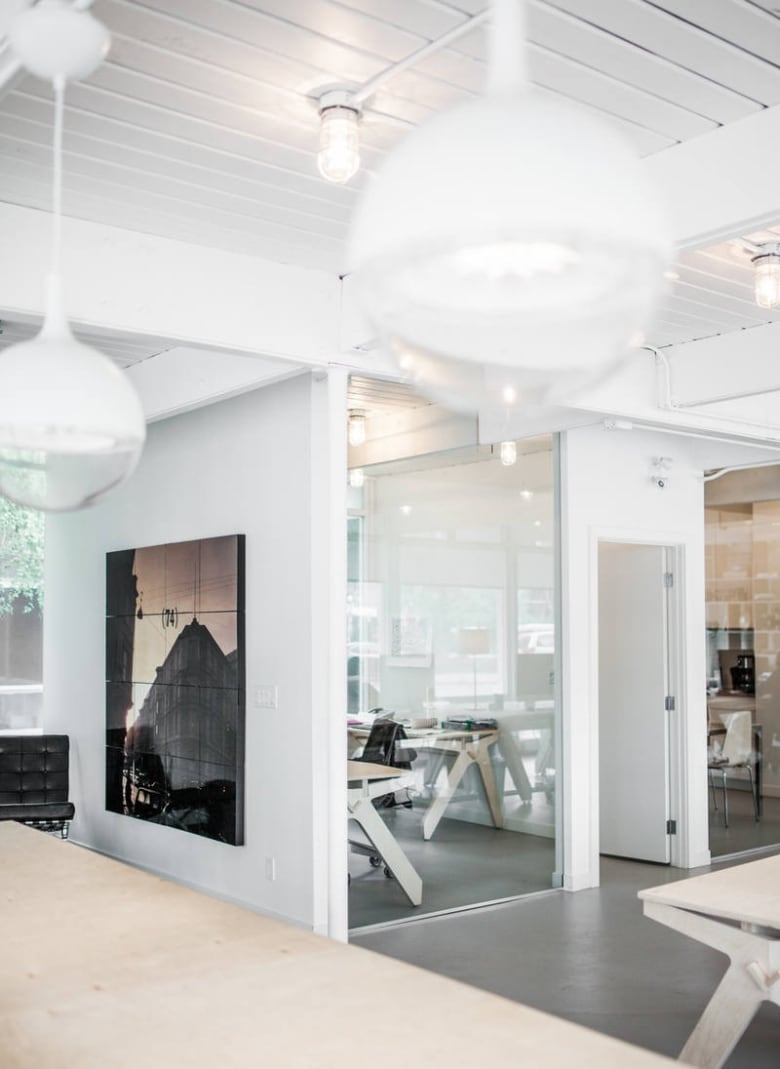
“And one morning, one of our staff members came to the office and said, ‘Hey, did you guys notice that Lacey Court is up for lease?’ And I said, this is amazing, we have to get on that. So I called the landlord right away,” he said.
“Within six months, we were in there.”
When asked what it was about Lacey Court that attracted him so much, Klumper said, “It’s an architect’s building.”
“It was designed by architects, and I think the first tenants were those architects, back in the ’50s. So it was great for us to bring the building full circle again.”
They set up their practice in the front space in 2015 after doing an extensive renovation, creating an open-office concept with windows looking out onto both the street and the interior courtyard.
“Light on three sides. It kind of felt like you were in a fishbowl, but we loved that. It kind of was an oasis,” he said.
‘The structure just floated’
Named after owner John Lacey — an oil and gas consultant, arts philanthropist and for many years honorary consul for the Kingdom of Thailand — Lacey Court was built in 1956 and was first occupied by J. Stevenson & Associates, the architects who designed it.
Dale Taylor, who has been an architect for over 50 years, is one admirer of the building. He’s the past-president of the Alberta Association of Architects and served as head of the architecture and industrial design programs at the University of Calgary.
In 1962, he was looking for a summer job after his first year at architecture school. He found a position working for the Stevenson firm in Lacey Court.
“Of course, I was one of the lower class, so I was in the back building,” he said.
He describes Lacey Court as a great example of the kind of work the Stevenson firm was doing in the late ’50s and early ’60s.
“It was, at the time, a pretty contemporary expression. A lot of glass and just these simple structural elements,” Taylor said.
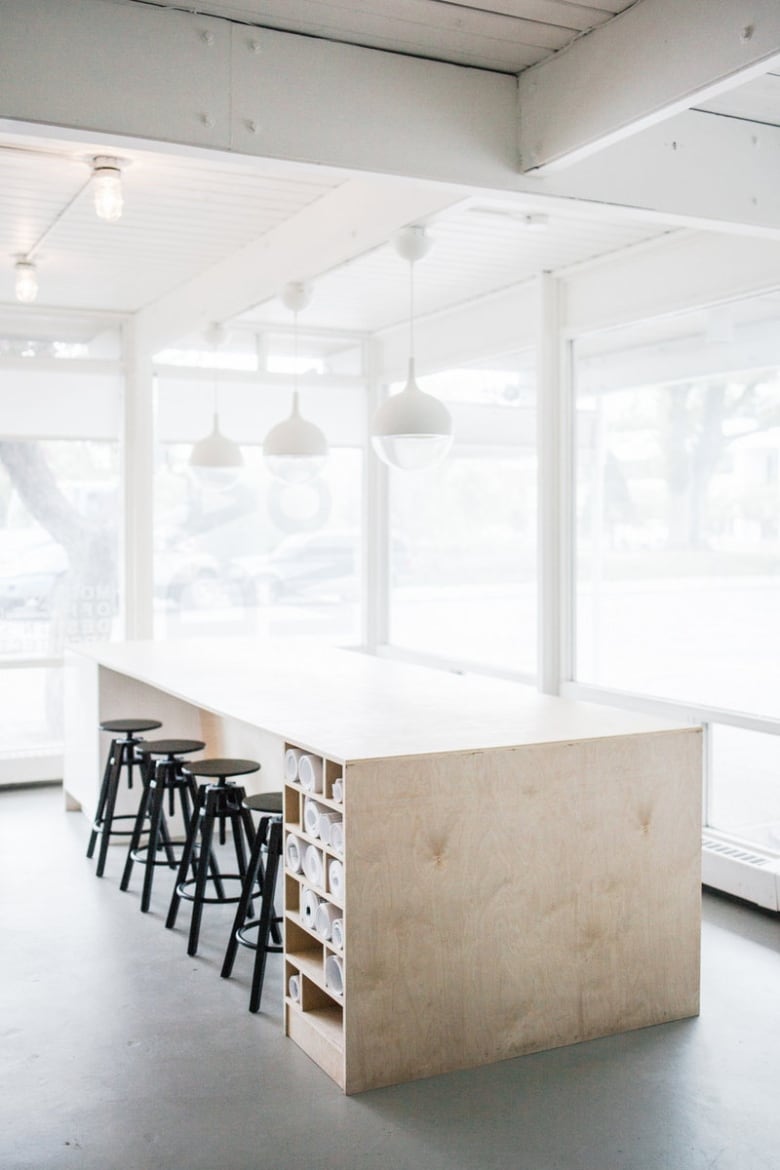
“The spaces inside were excellent because of lots of actual light, because there’s lots of glass, and then the structure just floated.”
Taylor says he finds it strange that the building is now probably in its last days.
“It’s sad because I’ve got some good memories of the place,” he said.
Palm Springs vibe
Josh Traptow, the chief executive officer of Heritage Calgary, calls Lacey Court “a gem.”
“It’s a very Palm Springs-esque style of architecture that was popular in the 1950s.”
What is it about the building that gives it that Palm Springs vibe?
“Slender steel columns, timber beams, strong horizontal lines, with clearly defined module pattern designed all around, and a courtyard. It’s nice clean lines, those nice picture windows on the front and the overhang of the roof. It’s just a really clean kind of design that was very popular in the 1950s,” Traptow said.
Traptow says the significance of the building extends beyond its design to its designer, J. Stevenson.
“His firm was responsible for the Barron Building, Stampede Corral and the Petro Chemical Building. So, that building is significant, not only for its architectural and style design, but also for its people value, given its close association with J. Stevenson, who was an extremely important architect in our city,” he said.
But today, “it’s really just kind of sitting there,” Traptow said.
“In the heritage world, we kind of just call that ‘demolition by neglect.'”
That’s a notion the building’s current owner rejects.
New ownership
Klumper says the problems at Lacey Court began when the building was listed for sale in 2020.
“We looked long and hard at actually buying the building ourselves, but we couldn’t make the numbers work,” he said.
Another group bought the building for $2.5 million with plans to transform it into a daycare. They gave MODA six months to leave, so Klumper and his firm moved a couple of blocks west and set up shop on the main floor of a new condo building.
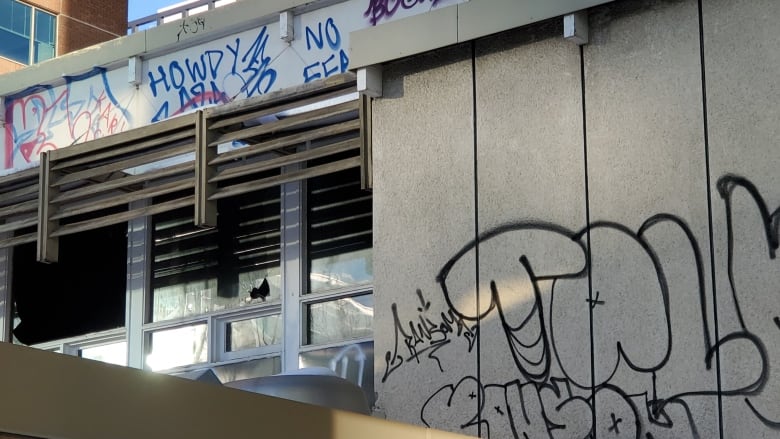
Nav Sidhu was the purchaser of Lacey Court. He says his plans to turn the building into a daycare have run into a series of roadblocks and unforeseen delays.
He blames the city for holdups in the rezoning and development application process. He says there were unreasonable demands for parking spaces and for hundreds of thousands of dollars worth of sewer upgrades under 12th Avenue.
He says the COVID-19 pandemic also slowed things down.
“It feels that at every turn we’ve hit a bit of a roadblock,” he said.
But he acknowledges that part of the blame for the current state of the building lies with him.
“We got a little bit too optimistic and eager and handed out notice to our tenants,” he said.
“So it got vacant, and then we kinda kept running into situations and issues. Hindsight is always 20/20, and as a young company, it’s something that we’re learning from our mistakes. It’s better to … have people, obviously, in the building.”
Sidhu says the latest challenge to his development plans is the new federal-provincial daycare agreement, which threatens to make his $5.5-million project unsustainable.
But while Sidhu waits, Lacey Court crumbles.
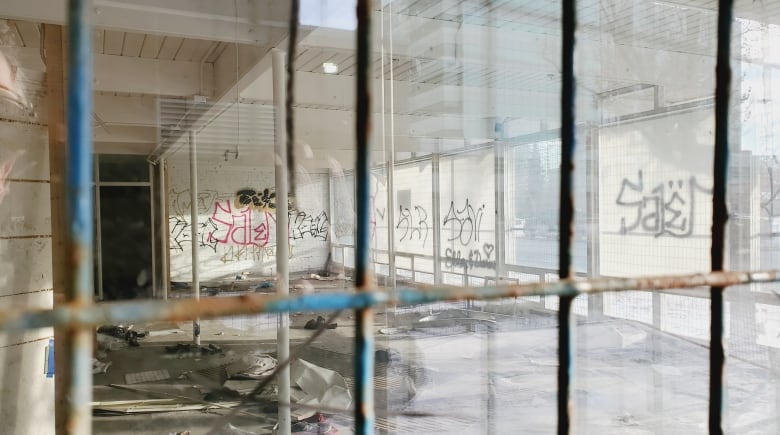
“We monitor the building as closely as we can. I don’t know how many calls that we’ve attended to there, for break-ins and everything like that,” he said.
“And what can we do? The police have said they’re not allowed to go in because there’s been so many calls now. They won’t go in and clear the building anymore. We just have to get it boarded up, every single time.”
The November fire was caused by trespassers, Sidhu says.
“It was in the top floor. Some people had broken in and then they had lit a fire to stay warm, and it kinda got out of control.”
The fire did extensive damage to the HVAC system and the roof. Sidhu says he’s waiting on his insurance company to complete an inspection. Plus he says he has engineers checking the building to make sure it is structurally sound.
“So that will be the real question of whether we can keep it or not,” he said.
When asked to respond to the suggestion it’s “demolition by neglect,” Sidhu pushed back.
“We don’t think so,” he said.
“I don’t believe that this building is going to sit like this for another year. We are very close. We have our financing. We have everything sorted.… Once we get some feedback from the insurance of what we need to do, and our engineers … that if we can keep the building or if we do have to demo … then we’re going to move forward and progress.”
Lack of incentives, or lack of will?
Traptow from Heritage Calgary says one of the challenges in protecting significant older buildings like Lacey Court is that, while the city provides base-funding to encourage owners of residential heritage properties to have their homes designated as municipal historic resources, no such funding exists for non-residential properties.
He says city staff were working on a package of incentives for non-residential property owners, but when council was asked for $2 million per year for base funding in 2022, the request was turned down.
“So we continue to face challenges when it comes to incentivization for owners to consider designating their property,” Traptow said.
“Until the city comes forward with more incentives, both on the financial but also on the planning side, I think we’re going to see more of these types of demolitions.”
He points to the recent demolition of the Rossmore Apartments and the upcoming demolition of the Western Block as examples.
“In the case of Lacey Court, it was a fully functioning office building up until the blue fence went up, and since then, it’s just kind of sat there decrepit … becoming an eyesore.”
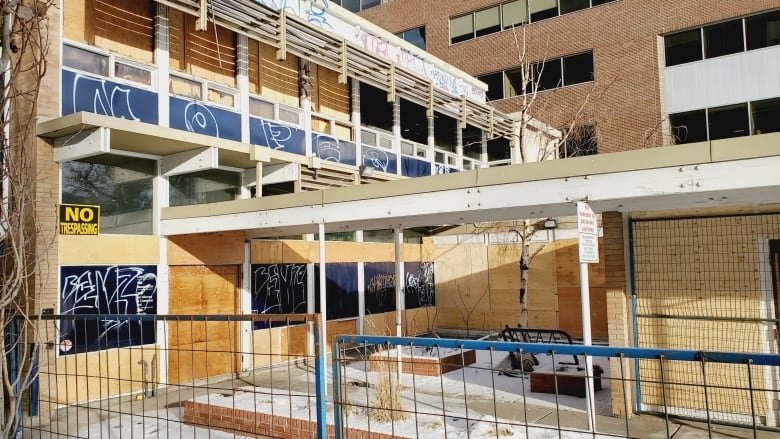
But Ian Harper, a senior planner with city planning policy working with the city’s heritage planning team, says the present condition of Lacey Court is not due to a lack of financial incentives for preservation.
“It’s actually interesting, at the time the application [for redevelopment] was initially applied for we did have the one-time funding that council had provided for that program. So we did make them aware that they would be eligible for up to $1 million in matching grants if they wanted to designate,” Harper said.
It wasn’t a lack of funding, according to Harper, but rather a lack of interest or will on the part of the owner, whose plan to replace the one-storey front building with a two-storey structure to accommodate the daycare would have likely made preservation impossible.
“I’m sure they weighed the options ahead of them and they decided we’d rather proceed with what we want to design and lose access to incentives and not designate the building,” he said.
Without owner buy-in, Harper says the preservation of heritage buildings is quite difficult in Alberta because all of the incentives and tools for protection are offered only on a voluntary basis.
“So, if you don’t have a property owner who is willing to designate and protect the building, we have very little purview to insert ourselves and be involved in how to maintain that building,” he said.
“So, we can recognize that it has value and we can offer tools to property owners, such as Lacey Court, but ultimately if they choose not to take us up on it, we don’t have a lot of opportunity to be involved.”
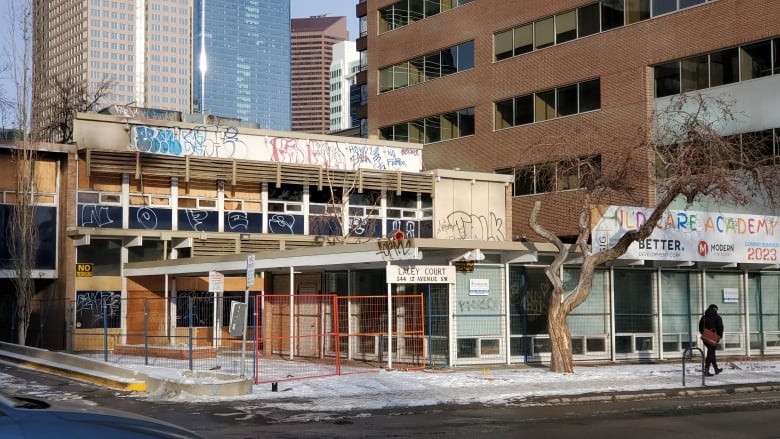
Harper said the city is in the process of developing new programs to support non-residential and commercial heritage properties.
“So that, when people are looking at what to do with their property, when they’re trying to envision its next hundred years of life, they have some tools and incentives that make it worth their while to consider protecting the heritage,” he said.
Traptow says the city has the power to impose preservation rules, but no municipality in the province has ever designated a building as a historic resource against the owner’s wishes.
The province can also designate buildings, he said, but they do it very rarely, and it has to be a building that has provincial significance. Could Lacey Court have provincial significance?
“Perhaps,” Traptow said. “But I doubt that this current government would designate that property against the owner’s wishes.”
‘A significant loss’
Traptow says the demolition of Lacey Court would be “a significant loss.”
“I know a number of people who, it’s their favourite building, because they really enjoy that international style of architecture. Because we have so little of it in Calgary,” he said.
“I also love Lacey Court. Just the clean lines.… It very much has that vibe of the booming 1950s, and I’m sure they probably had some great parties there.”
The day after the Lacey Court fire, Ben Klumper and his partner were strolling past the building and noticed the doors were open, so they went inside for a look.
“We walked in to where our office used to be and it was just a disaster zone. The homeless had taken it over. Drug paraphernalia everywhere. It was just a mess. And it was really heartbreaking to see that,” he said.
Klumper says he often finds himself asking why, in Calgary, it’s so hard to “keep nice things.” Today, when he walks past the building that meant so much to him for so long, he feels both sad and disappointed.
“Sad in that it’s — in my mind — one of the last modern architectural landmarks and gems in the city, and very disappointed that it got into the state it’s in now.”



